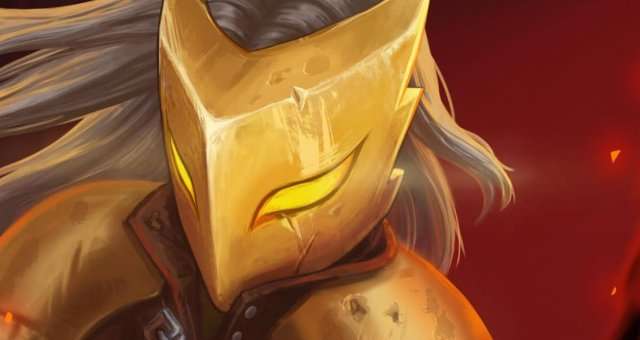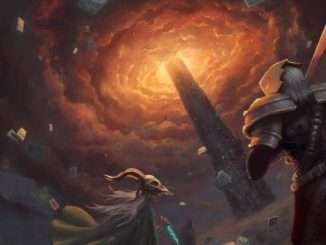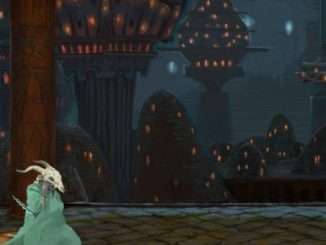
Some different kinds of decks the Ironclad can try to build
Other Slay the Spire Guides:
- Beginners Guide.
- Tips and Tricks.
- Ironclad Win Streak Guide.
- Ironclad Exhaust Builds.
- The Silent Ascension Mode Build.
Overview
The Ironclad is a strong class but requires knowledge of the game (cards and enemies) to play well. It’s important to know what kind of deck you are going for so that you can prioritise cards that work well and ignore ones that don’t, or to know how many of a card is too many. You want to be able to plan as much in advance as you can – the first floor shouldn’t give you too much trouble, so you don’t need to take cards for the fights you’re doing at the time, you need to take cards for the fights that come later. But you can take speculative picks on the chance that you get what you need later, and if they help you in the meantime, all the better.
Pay attention to the rarities of the cards you need (Gold border on the name = rare, blue = uncommon, grey = common). If your deck needs a particular rare card but the rest of the cards needed are mainly commons, you should feel safe to go for that deck once you get the rare. Sometimes you will know what you’re making by the time you’ve beaten the first boss, other times you will just need to keep looking for what comes up in the second area.
Ironclad decks usually want to be a bit smaller than Silent decks on average. Sometimes if you don’t find key cards early, you’ll end up with a bunch of cards that don’t really support what you’re trying to do, but it’s still better than not having a plan at all. You can work around it by using exhaust cards like Burning Pact to clear your “failed card ideas” during fights.
There are only a few cards that are universally good for the Ironclad. Even with a strong card like Metallicize, a couple of the decks below won’t value it as highly, though it’s never bad to have. Three cards that are almost always good are Shrug It Off, Offering, and Battle Trance (though you don’t always want more than one copy of Battle Trance).
Demon Form Decks
Don’t be put off by Demon Form’s energy cost. It might be that in a short fight (like most non boss fights in the first area) it’s not worth playing, but the higher you go, the longer the fights get. And in those long fights, you just play Demon Form when you draw it, even if it means taking damage that turn, because it will win the fight in the long run.
Demon Form decks are defensive. You focus on surviving for as long as you can so that your strength can tick up to huge values. You’ll get some incidental damage on the enemies in the meantime on the turns when you don’t draw a lot of defence cards (or the turns you don’t need to play them), but most of your damage comes later in the fight.
So you don’t need to take lots of cards like Pummel or Twin Strike that synergize with strength, nor cards like Flex or Inflame that can get your strength up faster. You can even cull your starting strikes. You just want a small number of cards that can finish the enemy off – Whirlwind is good because it hits all enemies and multiplies your strength by your energy. Sword Boomerang is ok (but beware thorny enemies) because it can either multiply on a single enemy or clear multiples. A Heavy Blade can be good to kill a big enemy that has been growing its own strength before it overwhelms your defence (plus it might help kill an Exploder before it explodes).
Apart from defence cards, a couple of cards that are particularly good in this deck are Reaper and Feed. It’s easy to finish an enemy off with Feed when you’ve got high strength, and Reaper can heal you for huge amounts of life, giving you more leeway to take damage.
If you don’t have a Demon Form, you can “build your own” Demon Form with Rupture and a card that hurts you regularly like Combust or Brutality – as long as you can manage the life loss.
Limit Break+ Decks
This is similar to a Demon Form deck where you defend yourself and gain strength over time. The key is that Limit Break must be upgraded so that it doesn’t exhaust itself, so it can increase your strength every time you draw it. There are a few issues that make this deck harder to build and play than Demon Form, though:
- You need at least 1 strength from another source to get started before your Limit Breaks will start giving you strength.
- Once you are using Limit Breaks, strength given by any other source is not needed any more – feel free to exhaust your Spot Weakness after the first cast.
- Since it’s not a power, Limit Break will only increase your strength when you draw it. This means you want a smaller deck, a second copy of Limit Break+, or a Headbutt to bring it back, if you don’t want to have too long of a set up time.
- Also because it’s not a power, you have to spend energy to cast it each time you draw it, which reduces your energy for defence.
- Being slower to set up and energy intensive means you might struggle against Donu and Deca, though it’s not impossible to beat them. The Collector might also be hard.
- On the upside, a Demon Form deck usually only gets to about 30 strength during a fight, while Limit Break can sometimes get over 100. You can kill bosses with a single card and regenerate all your health with one Reaper.
Barricade Decks
Barricade decks are hard to get cards for because they ideally need rare and uncommon cards, and they take cards that other strategies often ignore. But if you know from early on that you’re making a Barricade deck, and you get the cards you want, it can be extremely strong, making fights seem trivial. (Compare to a Demon Form deck which is easy to build, but slightly less strong once it’s actually being played). Like the Demon Form deck, you will just have to accept that you might take damage the turn you play Barricade.
Entrench is the key card (apart from Barricade itself). Once you have more defence than the enemies can deal before you next draw Entrench, it means that you can keep block up permanently just by casting it. Even more likely is that your block just keeps getting higher (to a maximum of 999).
Another card, less essential, is Impervious. With Barricade, none of its block is ever wasted, so it can keep you alive over several turns or give you the foundation to start going exponential with Entrench. If you don’t have it, you can just use normal methods of getting block though.
You still need a way to kill the enemies though – some of them can’t just be chipped away at, like the Awakened One that regains 10 health per turn, but especially the Champ who can cast Metallicize over and over till you get him below half health. The easiest way is to use Body Slam which can one shot any enemy. But if you don’t have one, just have some kind of scaling offence like Demon Form or Rampage.
Dual Wield Decks
You can build your own offensive and defensive engines by using Dual Wield on your powers. This can require some luck of drawing both the Dual Wield and the power you want to clone at the same time, unless you have Runic Pyramid (boss relic). However, if you do get to clone a power once and then don’t play that power, it increases the chance that the next time you draw Dual Wield, you will also have a copy of that power in your hand. This deck obviously takes a while to set up, and card manipulation like Warcry becomes very useful.
One of the best powers to copy is Metallicize. Get enough of them out and you won’t need a Barricade to be able to block all the damage coming at you forever.
For your offence, you can copy Inflame, or Rupture if you have a card that hurts you (the bonus being that if you have enough Ruptures, you only have to hurt yourself once to gain high strength). In some fights you can just chip away at the enemies anyway.
This deck doesn’t work against the Ascended without a backup plan because the increased strength it gets from your powers more than offsets the extra block you get from Metallicize. It also struggles against Donu and Deca because of the set up time.
Infinite Combo Decks
To get an infinite combo you need two cards that cost nothing and draw a card when cast, like Flash of Steel, Finesse, and Dropkick (if the enemy is vulnerable). Then you need to get the rest of your deck into your hand (or exhausted). Then each time you cast one of these cards, you’ll draw the other.
You can’t do it with just one card because it won’t draw itself if it’s not already in your discard pile when it tries to draw a card. If you have Madness, you can reduce the cost of a card that draws a card (like Shrug It Off) to act as a combo piece. Or you can use the Sundial that gives you extra energy when you shuffle your deck. Or you can use Dual Wield to make a second copy of a combo piece during the fight.
How to get your deck small enough? You can thin your deck outside of combat (e.g. by removing cards at shops), and you can try to store more of your deck in your hand with Runic Pyramid or card draw effects, but the main mechanic you should rely on is exhaust. (This is particularly true when facing enemies who can add status cards to your deck). It doesn’t matter if your deck starts off at 30 cards as long as you can exhaust it down to 11 during the fight. But hopefully a lot of those cards are powers or exhuast themselves so you don’t have to spend too long setting up.
Fiend Fire is good because it can exhaust many cards at once. Corruption can work, as long as you’re not using Finesse as a combo piece. You can use Battle Trance to get more cards into your hand for the Fiend Fire turns (and then use Warcry to protect cards you don’t want to exhaust), but don’t cast Battle Trance on the turn you combo off. Most of the work will usually be done by Burning Pact and True Grit as these can be reused and work on any card type.
Feel No Pain is good in any deck with enough exhaust cards, but it’s particularly strong here. It means the turn you cast a big Fiend Fire you also get to block a huge amount of incoming damage.
When you have an infinite combo deck, you won’t use the combo to win every fight, since in some fights you can kill the enemies faster than you could set up the combo. But it’s good for killing bosses and some big enemies like Maw.
Infinite combo decks don’t work against Time Eater. Also, if you’re using Dropkick as part of your combo, you might struggle to remove the artifact buff off some enemies before you can make them vulnerable.
Aggressive Decks
Rather than trying to defend and survive, these decks try to avoid taking damage by killing the enemy really quickly. These decks can be hard to win with because some enemies have lots of health. Some good cards for these decks:
- Perfected Strike. This card has no set up time, it does full damage from the first turn. You just have to build around it by taking cards with strike in their name such as Pommel Strike.
- Heavy Blade. Although you’re not trying to build up strength over time, you might be able to get some quickly with Inflame / Spot Weakness / J.A.X. to make this card do a lot of damage.
- Double Tap. Upgrading this will let it duplicate your next two attacks, but even duplicating a single 2-cost attack saves energy.
- Clash. Since it costs no energy, it lets you play your defends (it also ‘forces’ you to play them) which increases your survival chances while also doing lots of damage. But beware of statuses, curses, and expensive powers.
- Shockwave. The vulnerable status helps you to do a lot more damage to the enemies, and the weak status gives this deck some more survivability.
- Rage. You will usually be playing all attacks with this deck, so this is a zero energy way to also block at the same time.
- Impervious. Since you want the fight to be over quickly, you don’t care that this exhausts itself. It only takes up 1 card and 2 energy so it doesn’t dilute your focus from attacking like other defensive cards would.
I should mention the world record deck by Anti-Flame which used Flex, Offering, Thunderclap, Whirlwind to win the whole game in just over 5 minutes.
Rampage Decks
Rampage is uncommon, so it might be something you go for if you can’t find anything better. You might try to use it aggressively by casting Headbutt and Double Tap as often as possible to build up its damage quickly, or you might try to defend a lot and build it up slowly. You can also use card draw to be able to cast Rampage again immediately once Headbutt puts it back on top. Note that if you have more than one Rampage, each keeps track of its damage separately – it’s usually best to focus on building up just one of them.
Another card that can scale itself is Searing Blow – if you draw it at the same time as Armaments, you can continually upgrade it during combat.
Since I haven’t mentioned it earlier, Evolve is a good card. Once it’s upgraded, it draws two cards per Wound, so you go through your deck faster. That’s paticularly important for these decks.
Relic Decks
What’s better, Dead Branch or Dark Embrace? Even though Dead Branch sometimes gives you useless cards and makes your deck less consistent, it does have advantages over Dark Embrace. It can give you cards of any rarity, including ones you haven’t run into earlier, allowing you to transform your deck into a better deck during a fight (assuming that you didn’t already have a good deck plan). An even better relic for doing this is Nilry’s Codex. The codex gives no immediate benefit and slows down your run with all the extra decision making you have to do, but as long as you can survive being attacked, you can use it to build whatever you want.
A different kind of relic deck is one that ignores the earlier advice in this article and tries to build a deck that’s strong for the first area rather than focusing on the future, but then uses that strength to kill as many elites as possible to collect relics. Then if you get good relics, you can build towards something that works well with them.





Be the first to comment